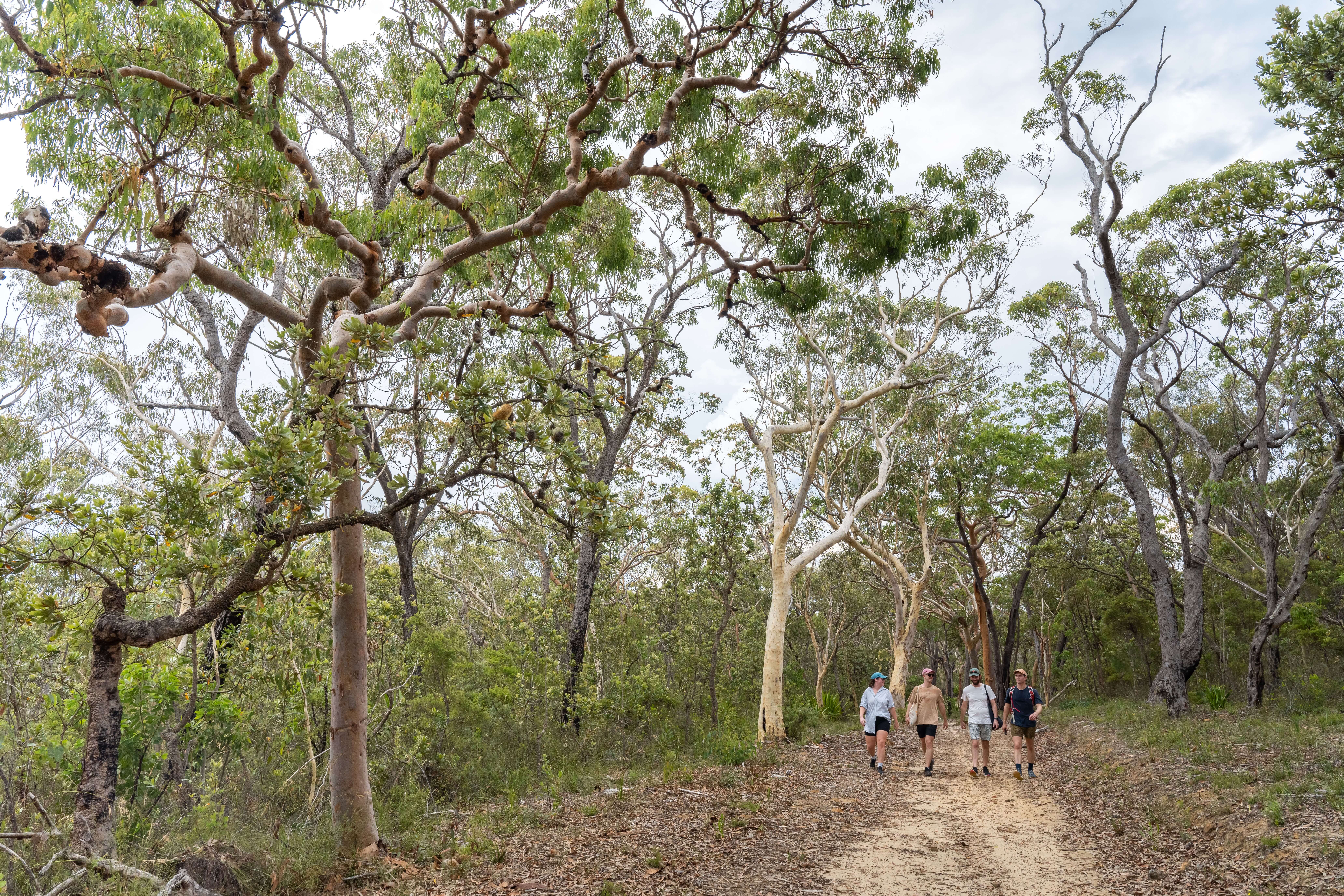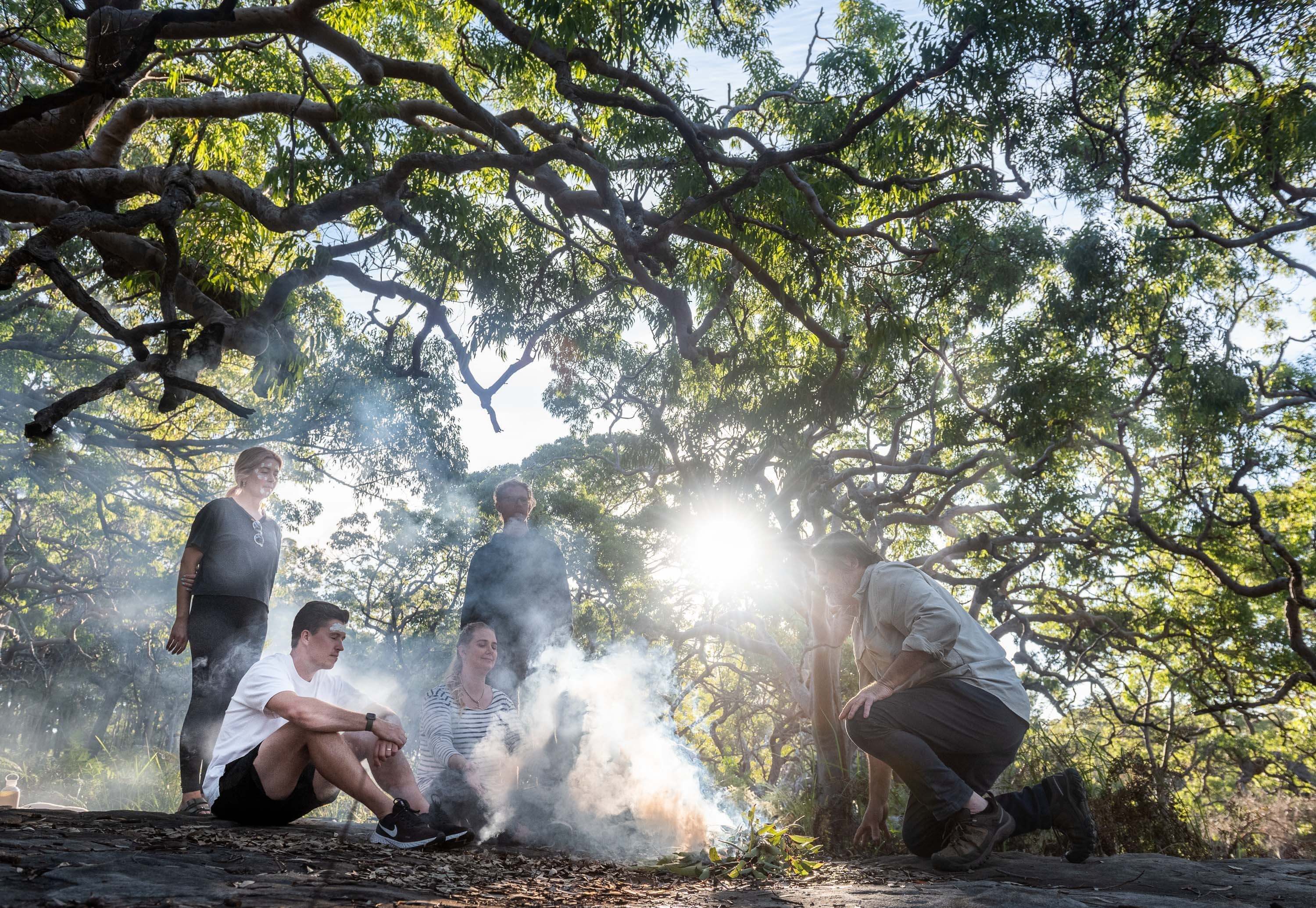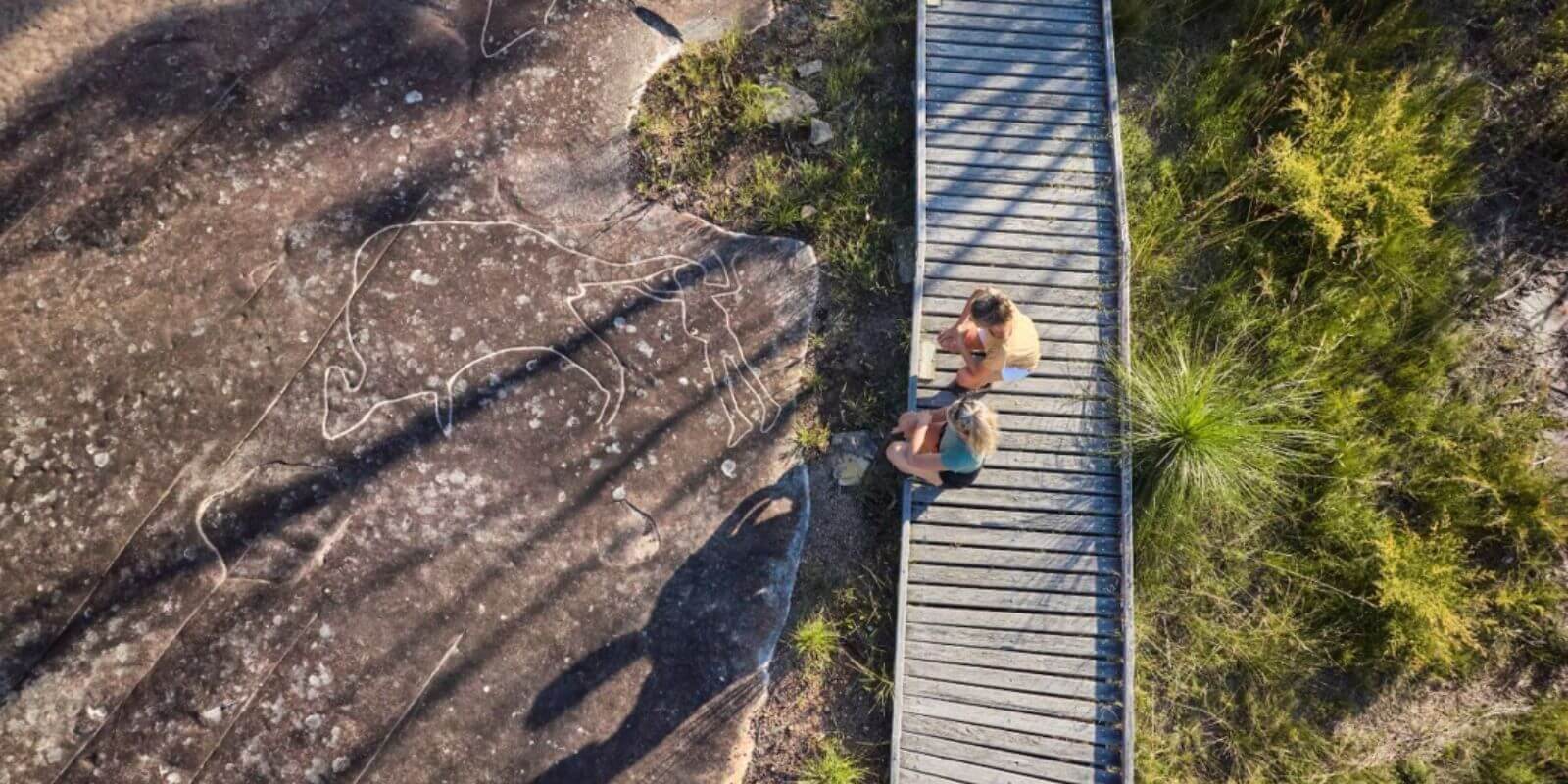
How to visit Aboriginal sites on the Central Coast respectfully
With the Central Coast home to an incredible number of important Aboriginal sites illustrating the world’s oldest continuous living culture: but if you're a tourist, how should you experience and share them?
The Central Coast is home to over 2,900 registered sites of cultural significance. Many are well signposted and accessible to visitors in the NSW National Parks network that occupies the Central Coast; while others are sacred to the local Aboriginal community and should only be visited at the invitation of the local Aboriginal community.
However, whether you’re visiting a shell midden or viewing rock art in one of the Coast's five national parks, no matter which site you visit it’s very important to do so without disrespecting its cultural heritage values.
We spoke to a local Elder on the Central Coast to determine how best to experience Aboriginal sites (rock art, cave paintings, engravings, middens, axe-grinding grooves), in a way that best respects Elders past, present and emerging.
How to visit sites respectfully
Tracey Howie, a GuriNgai/Karee (aka, Broken Bay Tribe) woman of the Garigal & Walkaloa family clans
On the Central Coast, Elder Tracey Howie, Director of Awabakal & Guringai Pty Ltd, recommends both visitors and locals start by visiting the well-known and signposted Aboriginal sites in the Central Coast’s national parks, including Bouddi, Brisbane Water and Popran National Park.
“Definitely follow the signs and stay on established pathways or tracks, because a lot of the time those pathways around those sites are there for a reason: they're put in a particular place so that visitors don't impact on areas that they shouldn't be impacting on”.
This ensures important Aboriginal sites are not unknowingly damaged.
“If you were to wander off any of those tracks or pathways, and try to cut your own paths, you wouldn't know what you were walking on top of”.

Image: Popran National Park
Credit: James Vodicka x Destination Central Coast
Credit: James Vodicka x Destination Central Coast
Guidelines for posting images on social media
Consider some things are not Insta-worthy
When it comes to sharing images of Aboriginal sites on social media, Howie says people are welcome to share online and on social media, with a few common-sense and culturally-sensitive caveats.
“As long as it's presented in a respectful manner, nobody will have any issues with it at all”.
However, if you do plan to share images on social media, Howie recommends sticking to the main known sites in the National Park. Some Aboriginal sites on the NSW Central Coast are considered sacred to men and women, with one group sometimes not meant to visit or see the other’s important places, with serious cultural repercussions for those who do.
“That's why the national parks are the best way to go… if somebody takes photos and wants to share that with their friends, they can comfortably do that without any repercussions coming back”.

Girri Girra Aboriginal Experiences in Bouddi National Park
Credit: Dominic Loneragan
Credit: Dominic Loneragan
Get your captions right
Words are powerful, so sensitively check yours
If you are sharing photos or images of sites on social media, it’s also important to be mindful of what captions you use to accompany your pictures.
“If you're sharing information, make sure that people know this is your interpretation”, says Howie.
“I even do that myself if I take people to a site. If I'm trying to describe to them what this site is about, I will always say to them, ‘first and foremost, this is what I've been taught about this site. This is also my opinion, this is how I feel, these are my feelings about this site’”.
Lastly, Howie offers a well-known but effective mantra for visiting local sites:
“Take only photos and leave only footprints”
You can follow this mantra in the form of the Central Coast Sustainability Pledge here.
Please show respect when visiting Aboriginal sites and do not:
- touch or interfere with a sacred site
- walk over a site
- ride your bike over a site
- light fires or drag vegetation through the area.

Image: Bulgandry Art Site Aboriginal Place, Brisbane Water National Park
Credit: Cameron Board x Destination Central Coast
Credit: Cameron Board x Destination Central Coast
3 Central Coast national parks featuring public Aboriginal sites
Bouddi National Park
Located in the southern part of the Central Coast, Bouddi National Park is home to around one hundred recorded significant cultural sites. These include rock shelters featuring art and engravings, middens and grinding grooves. Head to the signposted Daleys Point Aboriginal Relic Site to see engravings of five whales.
Brisbane Water National Park
Home to one of the most sacred Aboriginal sites on the Central Coast, the Bulgandry Art Site Aboriginal Place features rock engravings and shares a Dreamtime Creation story. Easily accessible along a purpose-built walkway, the site is remarkable as it features one of the few visual presentations of a Dreamtime creator figure, depicting him with arms outstretched. It also includes carvings of a wallaby, fish and dolphin, as well as grooves used for grinding. You must stay on the path to help preserve the site.
Popran National Park
Featuring rock engravings and sandstone shelters with stencil art, Popran National Park is home to hundreds of protected Aboriginal sites including rock engravings, sandstone shelters with hand stencils and foreshore middens throughout the park. The Hominy Creek trail leads to Emerald Creek, and Emerald Pool, where there are axe-grinding grooves and engravings visible.
This article was originally authored by Shaney Hudson, as part of a Love Central Coast grant project brought to you by Destination Central Coast, jointly funded by the Australian and NSW governments under the Bushfire Local Economic Recovery Fund. To maintain accuracy, some editorial changes may have been made since publication.
Destination Central Coast understand it’s vital that we work collaboratively with Aboriginal and Torres Strait Islander peoples to portray an accurate, inclusive and authentic representation of Indigenous Australia, informed by best practice cultural guidelines provided by Tourism Australia. Due to any sensitive cultural content, we wish to acknowledge this as a 'living article' created in ongoing, open consultation with the Indigenous peoples it aims to represent.
If you're an Aboriginal-owned or Aboriginal-run business on the Central Coast, we'd love to hear more about it. Simply get in touch with us here, create a free Love Central Coast business listing here, or tag us when sharing your local story on Instagram and Facebook.

